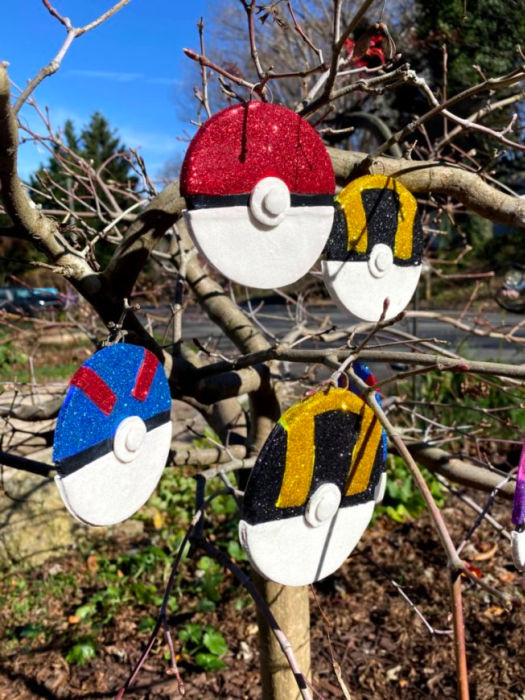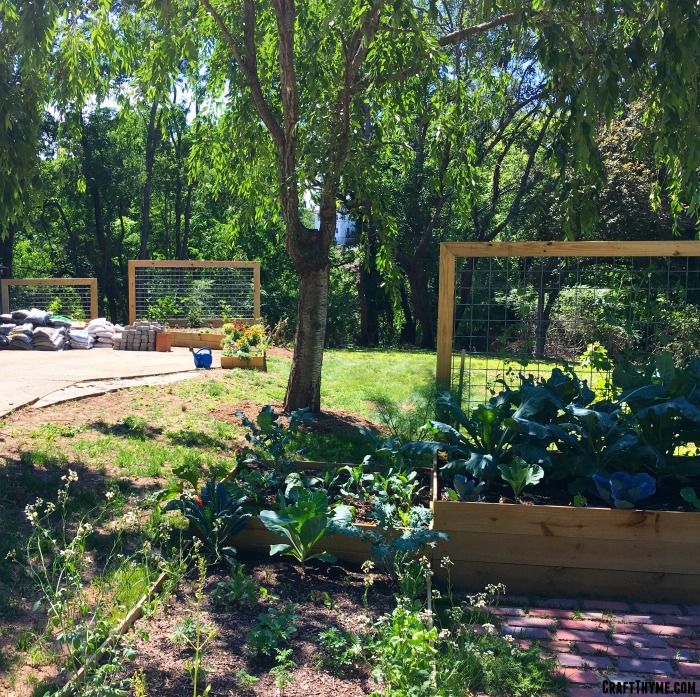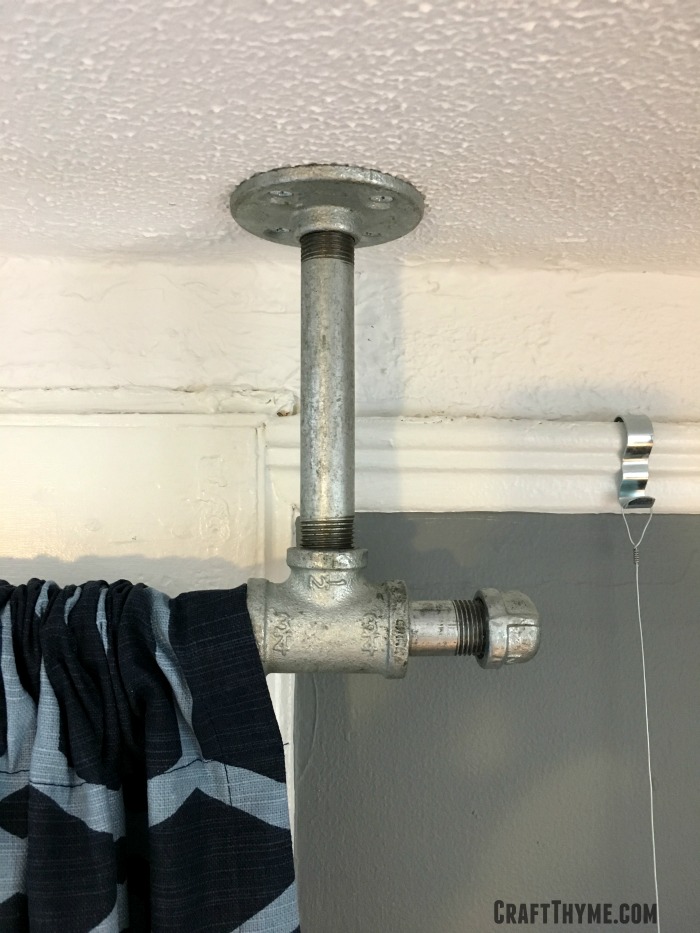
It was time to up our nerd game and move to a Pokémon themed Christmas Tree. Over the years we have featured all types of theme trees, but since the entire household plays Pokémon it was like serendipity for this year’s theme. Of course we had to add DIY elements to our Pokémon Christmas theme, but did mix in a few purchased elements. Doing an entire theme tree from scratch can get pricey so this is how we created our budget friendly Pokémon theme Christmas Tree.
We will start with the DIY Pokémon elements, and give you not one, not two, but really just two tutorials, with a third honorable mention. If you want to skip around we will look at the following in this order:
- How to make a Pokémon energy garland
- How to make flat Pokéball glitter ornaments
- How to make pokeball pom pom ornaments. (Or die trying)
- Pictures and inspiration of the DIY Pokemon Christmas Tree
- Finally, How to remove glitter from your pets and nether regions (Oh wait, no. We don’t know how to do that)
Pokémon Energy Garland
If you play or collect Pokémon trading cards you are going to end up with loads of energy cards. If you don’t they are suuuuupppper cheap (affiliate links ahead). This tutorial is so easy I didn’t even take pictures. You need the following:
- Pokémon Cards (We used energy)
- Hot glue gun
- Ribbon
- Glitter
- Elmers glue
I laid out all of my energy types and decided I just wanted to repeat the same pattern. I unrolled a length of ribbon, fired up the hot glue gun, and then just hot glued a card to the ribbon. Then I skipped the space of two cards on the ribbon and glued down the next. After burning my finger tips and cursing the size of my tree I was done! No wait I wasn’t…
For some reason I thought blingy glitter was a good idea. So, proceeded to had touches of elmer’s glue wherever I wanted garland, then sprinkle glitter in the color that matched the card, and then proceeded to lose my mind as I repeated the process, over and over. Good news the garland is on year two and is just fine. Bad news the dog, cat, and I are covered in glitter from this year and last.

DIY Pokeball Ornaments
Alright, now for a more advanced DIY Pokémon Christmas Tree ornament. For these are are going to need the following:
- Sculpy clay or other oven bake clay (White, black, red for a basic pokeball)
- Canning jar ring or large circle cutter
- Medicine bottle or small circle cutter
- Exacto knife
- Wire or small jump rings
- Rolling pin
- And you guessed it: Glitter!!!

I found it easiest way to create these pokeballs are to make two ornaments at a time. First roll out your white clay to a little more than 1/4 inch thick and cut a large circle.
Second, roll out your red and do the same as above.
Finally, cut a small strip of black the length of the diameter of the circles. It is very important to start from lightest clay to darkest. It is super easy to get dots of red or black into your white, unless you meticulously clean your cutters. So either go in order (or cover your mistakes with a heap of glitter like me).

Cut both circles in half and lay the out red, black strip, white and lightly mush them together. Then take your rolling pin and roll over the clay to firmly stick them together. This will make your final clay about 1/4 inch thick. Obviously, your circle is now gonna be a little wonky. Use your large cutter to bring it back into shape.

Once you are happy with your striped pokeballs you can use the small cutter (and the lid to your exacto knife) to cut out smaller circles. I rough up the center of the clay and the new circles to make sure it sticks to the flat piece.

When you are done assembling the pokeball Christmas ornament, cut a small slit and insert your metal ring or piece of wire. Close the clay around it, and when you bake the ornament it will become part of it for easy hanging.

Follow your clay baking instructions. I suggest covering your baking dish in tin foil. It keeps the white from turning tan.
Once the clay is cool then you can use glue to glitter. Unless you have sense. If you have sense and don’t want to be covered in glitter for years, you can skip this step. But if in your heart of hearts you want a Pokémon ornament so blinging it brings a tear to a shiny Charizard’s eye? Well then glitter away.

Pom Pom Pokeball
Nope, just no. I thought this was going to be an easy craft, but it wasn’t. If you want to follow my tutorial then it goes like this:
- Watch a Pom Pom making tutorial on YouTube using a cardboard ring. Fail
- Go buy a cheap Pom Pom maker and try again. Fail
- Go buy a more expensive Pom Pom maker and get a decent Pom Pom
- Use the expensive Pom Pom maker and try to incorporate red, white, and black into a ball. Make something that looked like poke dots. Fail
- Try again. Now the red and white are on one side of the black. Fail
- Fail
- Fail
- Finally figure out how to wrap one so it comes out like a pokeball.
- Manage to repeat this process a couple more times.
- Stop for the day and forget how to do it
- Fail
- Fail
- Make lots of pretty single color pompoms

Other Pokémon Christmas Decorations
Since this is year two of the Pokémon theme tree we did buy a few ornaments and a tree topper of Pokémon center (not an affiliate link). We added the led lights with glue to make it more festive. I also used part of my fancy card collection to make ‘ornaments’. I used hard card cases and glued on hooks. The cards are perfectly safe.

All in all we are very happy with out nerd tree. I miss our old Star Wars theme, but it felt good to give a new fresh look too! Hope you enjoy and can make your own Pokémon theme tree.






























